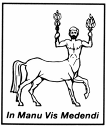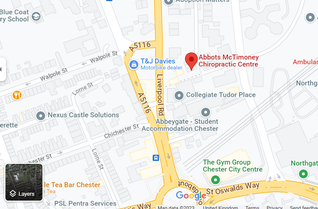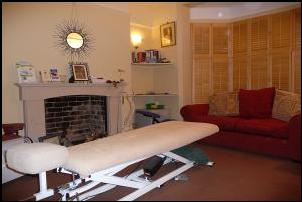Abbots McTimoney Chiropractic Centre
Chiropractic the McTimoney Way
Welcome!
The Abbots McTimoney Chiropractic Centre is a small and personal centre offering friendly advice and help on achieving optimal wellbeing. We work in partnership with you to achieve your goals - be that reduced pain, improved general health or just feeling happier in your own body. A great place to come if you are looking for a chiropractor in Chester.
The McTimoney method of Chiropractic is a gentle and effective approach to whole body health. It aims to improve the alignment and mobility of the bones of the spine and other joints of the body, to restore optimum function, to alleviate pain and to allow natural healing. Whenever possible chiropractors using the McTimoney approach work in coordination with the patients own doctor.
Our Chiropractors are members of the McTimoney Chiropractic Association and registered with the General Chiropractic Council.
Our clinic welcomes people from all walks of life and we aim to provide an environment where everyone can feel safe, valued and cared for regardless of personal identity, age, ability and history.
The figure Cheiron, half man and half horse, bears the torch of knowledge and the cadeus of healing. He represents a spirit of philosophical independance, compassion and a sense of trust.
These are qualities to which McTimoney Chiropractors aspire.
Ring now for an appointment!
Tel: 01244 374939
We are open Monday to Thursday; day and evening appointments are available. Please leave us a message with your name and telephone number and we will get back to you as soon as we can.
Location
Abbots McTimoney Chiropractic Centre is located close to Chester city centre, just off Victoria Road near the Northgate Arena leisure centre. It is a 20 minute walk from Chester train station and bus 51 (Chester to Plas Newton) stops at the end of the Nook.
Our address is:
10 Abbots Nook
Off Victoria Road
Chester
Cheshire
CH2 2BB
You can park for free in Abbots Nook if there is space. Alternatively there is free
on-road parking on Victoria Road (maximum stay 1hr).
The Treatment
The McTimoney method follows a relatively gentle, full body approach. Each time you come to see us we will assess your whole body from top to toe and adjust as needed.
Initial appointment
Total Cost £70
This includes discussing your full health history, an explanation of the treatment and
discussion of appropriate treatment plan. It also includes your first hands on
treatment if we are both happy to continue.
Follow on appointments
Cost £45 and last 30 to 45 minutes.
Includes ongoing treatment, review of your progress and continued care.
We are registered with Aviva, Axa PPP, Simply Health, Vitality Health and WPA.
The Chiropractors
Leander Mills BSc MMCA
Leander was a professional dancer for 8 years and has been practicing as a McTimoney Chiropractor since 2002. She now works in Chester and Macclesfield.
Leander is registered with the General Chiropractic Council and is a member of the McTimoney Chiropractic Association and the Royal College of Chiropractors.
Gillian Megson BSc MMCA
Gillian has been practicing as a Chiropractor since 2010. She works at centres in Chester and Marple.
Gillian is registered with the General Chiropractic Council and McTimoney Chiropractic Association.
Ann Williams BSc MMCA
After discovering McTimoney Chiropractic for her competing dogs, Ann decided to have a treatment herself. It was so good she enrolled at the McTimoney College of Chiropractic t become a Chiropractor. Ann now works in Chester and Nantwich.
Ann is registered with the General Chiropractic Council and is a member of the McTimoney Chiropractic Association and the Royal College of Chiropractors.
Links
The McTimoney Chiropractic Association
The website very comprehensively explains about the history of the McTimoney approach and how it may helps patients of all ages, from newborn babies to the elderly. Visit the web page for more information.
The General Chiropractic Council
The regulating body established by parliament to regulate the chiropractic profession.
A charity for healthier backs, BackCare aims to significantly reduce the burden of back pain by providing information and education to all people and organisations. They fund scientific research into the causes, prevention and management of back pain.
Other useful Links
The Alexander Technique is a way of learning to change habits, improve posture and ensure minimum effort and strain in our everyday activities. It may help you prevent and overcome back problems, neck pain and body tension and is complementary to chiropractic and osteopathy.
The Pilates method is a system of movement that educates the muscles of the body, particularly those of the deep abdominals, back, diaphragm and pelvic floor, to suport hte body efficiently and effectively. It can help to address postural imbalances by focusing on the deepest layer of muscles that support the spine, building core strength and helping to prevent injury.
https://britishgymnasticsfoundation.org/lovetomove/
Dementia steals loved ones, lives and memories; but it doesn’t have to be this way….
Our Love to Move Programme is an age and dementia friendly seated gymnastics programme which is transforming the lives of people living with dementia.
https://feldenkrais.com/about-the-feldenkrais-method/
The Feldenkrais Method® of somatic education uses gentle movement and directed attention to help people learn new and more effective ways of living the life they want. You can increase your ease and range of motion, improve your flexibility and coordination, and rediscover your innate capacity for graceful, efficient movement.
Recommended Books
Pain Free: A Revolutionary Method for Stopping Chronic Pain. Pete Egoscue, 2000
Egoscue Method of Health Through Motion. Pete Egoscue & Roger Gittines, 1993
The New Optimum Nutrition Bible. Patrick Holford, 2005.
Optimum Nutrition for your Childs Mind. Patrick Holford and Deborah Colson, 2008.
Activate your Vagus Nerve
Our vagus nerve has been getting increasingly more attention as of late…..but why?
Your autonomic nervous system is the branch of your peripheral nervous system which regulates the function of your internal organs like your heart, stomach, glands, smooth and cardiac muscles – all the things you do not consciously control. Your autonomic nervous system has two divisions which serve the same organs but create opposite effects in them: the sympathetic and parasympathetic nervous systems. Most of us are dominated by our sympathetic system, so we need to focus on increasing the parasympathetic tone, that's the part of the nervous system that helps us to repair and restore, commonly known as the 'rest and digest' part. This part is largely operated by the vagus nerve, which travels through the body, branching out to many of our internal organs.
These are some tips on how to help this:
1. Cold showers:
When we expose our bodies to something cold – this first causes an increased sympathetic nervous system response but is quickly halted after we acclimatize to the cold. In other words, our parasympathetic nervous system increases –other things we can do include splashing cold water on your face or drinking cold water.
2. Singing, humming and chanting:
Humming, chanting and singing all increase heart rate variability. Heart rate variability is a measure of the balance between the parasympathetic nervous system, which decreases the heart rate and increases the relaxation response via the vagus nerve. Singing produces slow, regular and deep respiration causing a pulsating vagal activity. Singing at the top of your lungs also makes you work the muscles at the back of your throat. All the more reason to sing in the shower, or literally anywhere!
3. Yoga:
Yoga is a parasympathetic activation exercise. Similar to singing, yoga breathing and guided breathing have beneficial effects on switching to our “rest and digest” state..
4. Deep breathing exercises:
Close your eyes and breath in thinking of brining light through your eyes and when you breath out visualise use that light to shine out like head lights.
5. Laughter:
There are countless other ways to increase our vagal tone including – tai chi, massages, specific supplementation, activation of specific muscles, chewing food properly, fasting, light exercise etc. These top 6 practices for vagus nerve stimulation are simple and uncomplicated and can be implemented into your clients (and your own) daily routines.
This is a brief summary of a more indepth article published by Truly Heal. For more detailed info, please go to https://trulyheal.com/vagus-nerve-7-easy-ways-to-access-its-powers/








